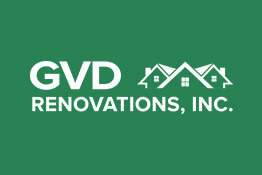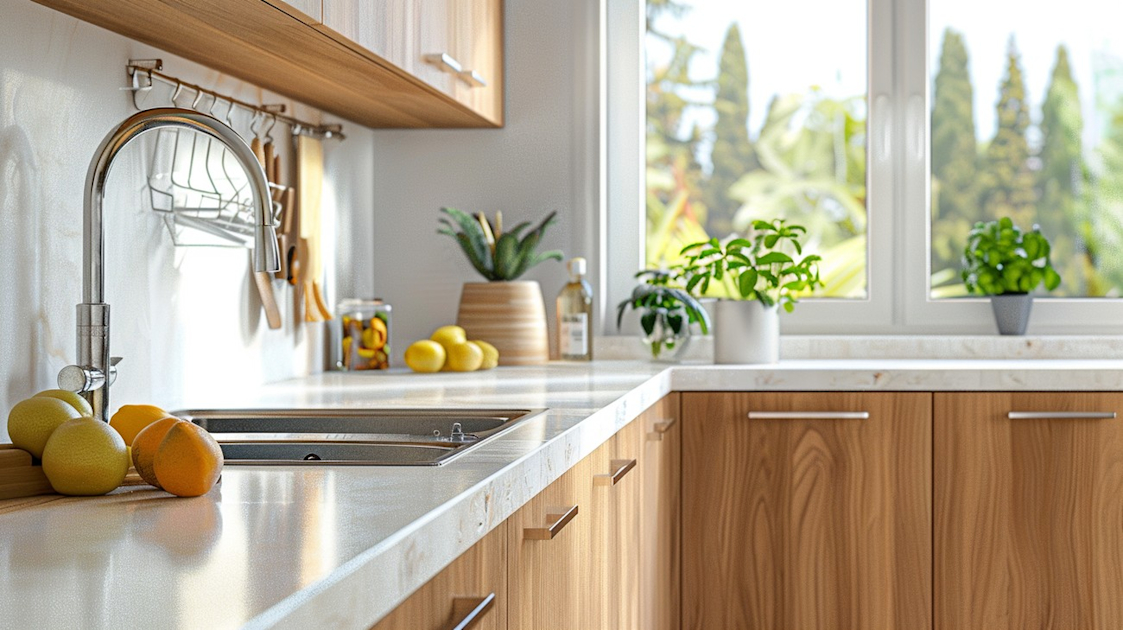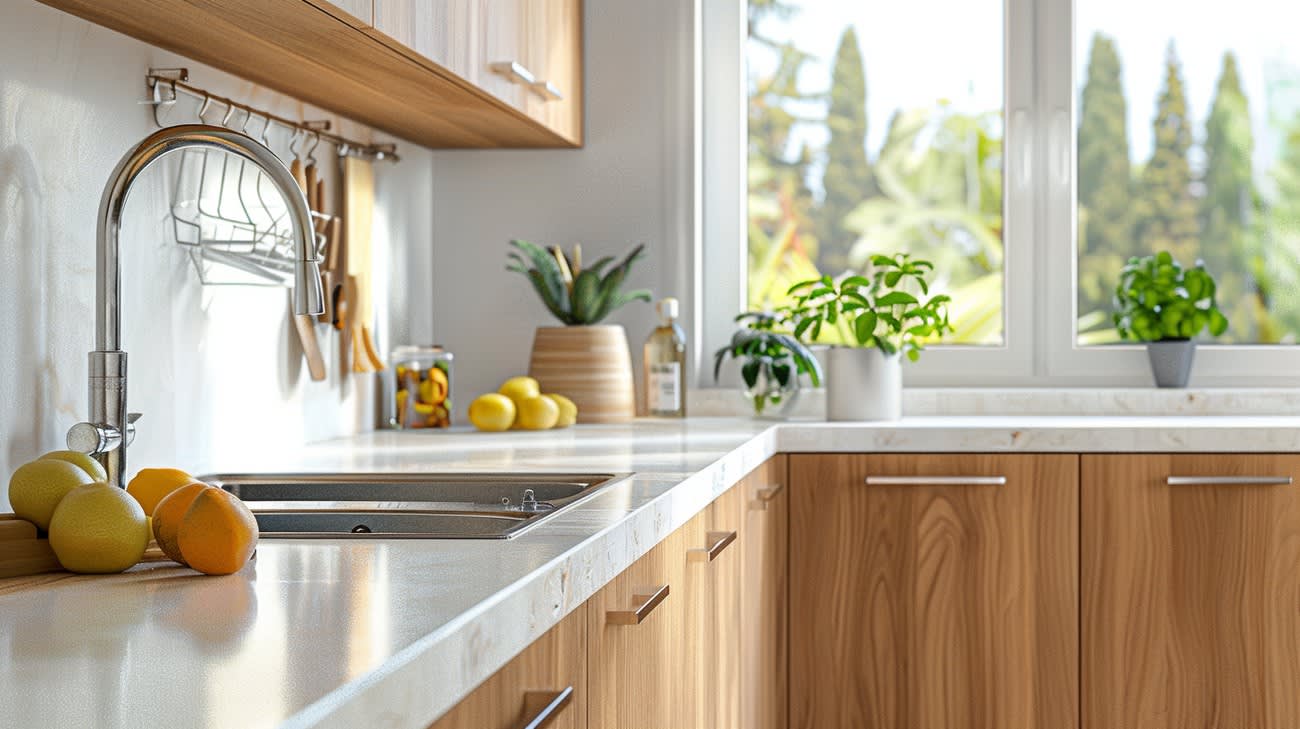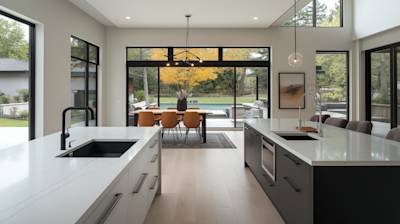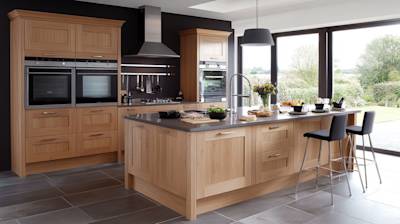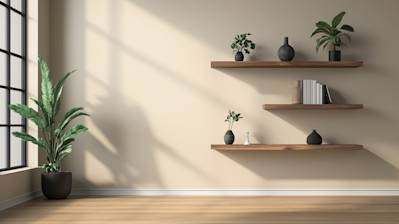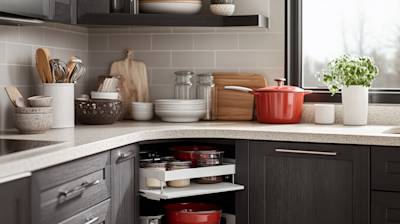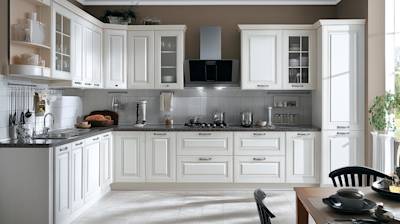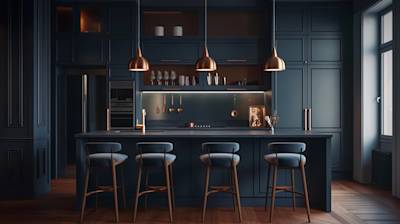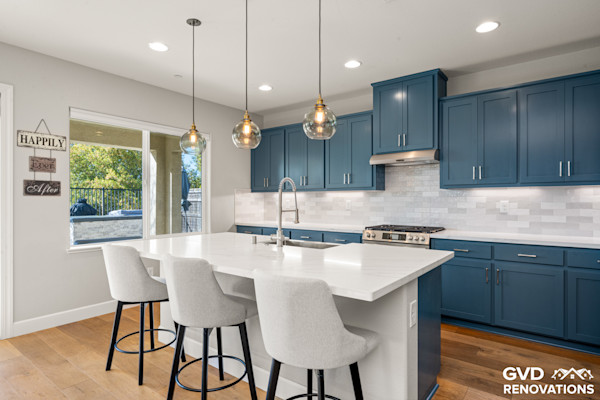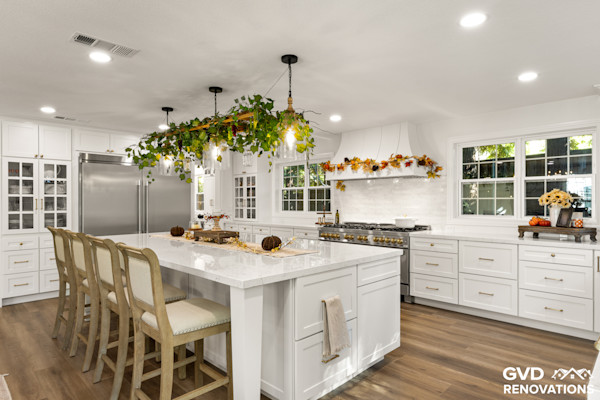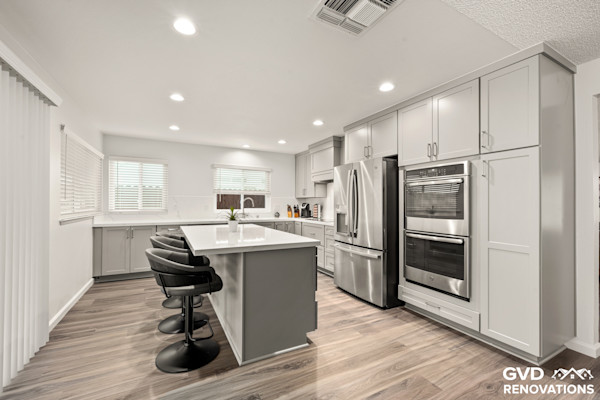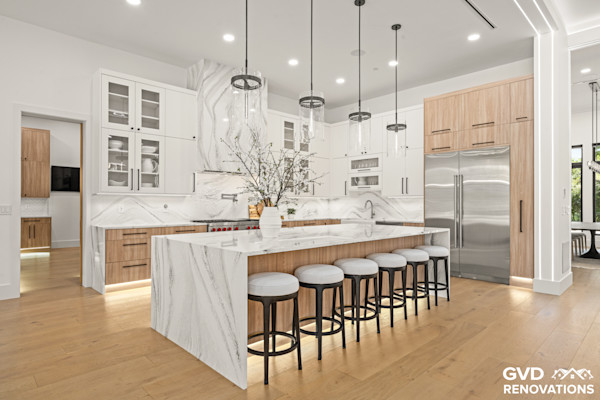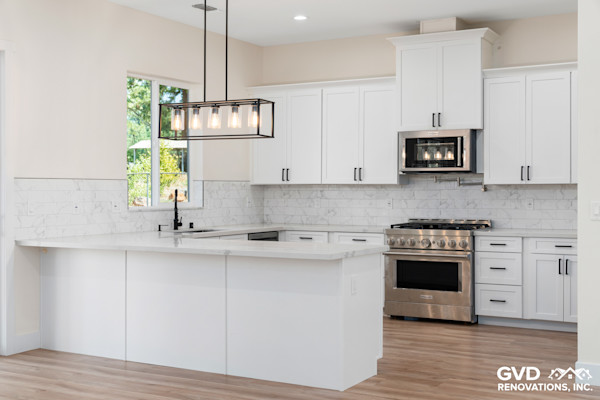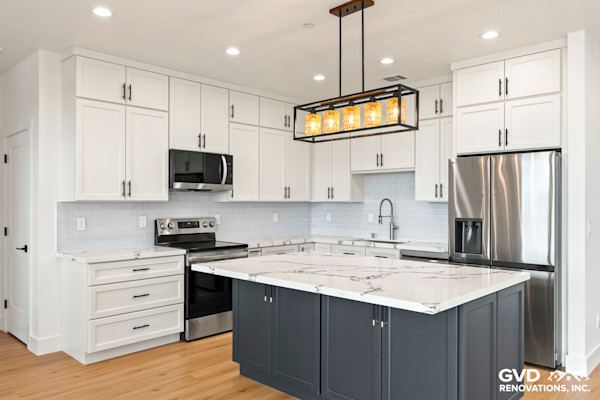Are you dreaming of a kitchen makeover but worried about the costs and time associated with a complete renovation? Refacing kitchen cabinets might be the perfect solution for you. This method offers a fresh, updated look without the hassle and expense of replacing your cabinetry. In this article, we'll explore what kitchen cabinet refacing is, the benefits, the process involved, and tips to achieve the best results. Let's dive into your next home improvement adventure!
What is Kitchen Cabinet Refacing?
Kitchen cabinet refacing entails giving your existing cabinets a new appearance by replacing the doors, drawer fronts, and veneer on the cabinet boxes, while keeping the current cabinet framework intact. It's a popular choice for homeowners looking to update their kitchen's aesthetic economically and efficiently. Through this process, you can completely alter the style, color, and finish without the need for a full renovation.
Why Choose Cabinet Refacing?
Choosing to reface your kitchen cabinets comes with numerous advantages, making it an increasingly popular home improvement option.
Cost-Effective Solution
Refacing cabinets is significantly cheaper than completely replacing them, often costing just a fraction of a full remodel. You get the luxury of a transformed kitchen without breaking the bank.
Time-Saving Makeover
Unlike a full renovation, which can take weeks or even months, refacing typically takes just a few days. This efficiency means less disruption to your daily life, allowing you to enjoy your refreshed kitchen sooner.
Environmentally Friendly
By keeping your existing cabinet framework, refacing is a more sustainable option. It reduces waste and the demand for new wood, aligning with eco-friendly home improvement practices.
Customization Options
Refacing offers a wide variety of customization options, from materials to finishes. You can choose different styles and colors to match your personal taste and kitchen decor, making it a highly versatile option.
The Refacing Process
Understanding the refacing process can help you make informed decisions and achieve the best results. Here's what you can typically expect:
Assessment and Planning
Start by assessing your current cabinets' structure to ensure they're in good condition. Measure and plan the new design, taking into account desired changes in style, color, and hardware.
Removing Old Components
The next step involves removing the old doors, drawer fronts, and any hardware. Carefully detach these elements to avoid damaging the existing cabinet boxes.
Prepping the Surfaces
Prepare the surfaces of the cabinet boxes by cleaning and lightly sanding them. This step is crucial for ensuring the veneer adheres properly.
Installing New Veneer
Apply a new veneer to all exposed cabinet frames. This involves precise cutting and fitting, ensuring that the veneer adheres without any bubbles or uneven edges.
Adding New Doors and Fronts
Install the new doors and drawer fronts. These components are custom-fitted to the existing framework and come in various styles to suit your aesthetic preferences.
Finishing Touches
Complete the look with new hardware, like handles and knobs. This small detail can enhance your kitchen's overall appeal and tie the new look together.
Choosing Materials
Selecting the right materials is crucial for the durability and appearance of your refaced cabinets. Here are some options to consider:
- Laminate: Offers a budget-friendly and durable option with a variety of colors and patterns.
- Wood Veneer: Provides a classic, elegant look. Available in multiple wood types, such as oak, maple, and cherry.
- Rigid Thermofoil (RTF): Durable and easy maintenance with the ability to mimic real wood closely.
Tips for Successful Cabinet Refacing
To ensure a successful cabinet refacing project, consider these tips:
- Hire Professionals: While DIY is possible, hiring a professional ensures precise installation and can save time and potential errors.
- Consistent Style: Choose a consistent style that matches the rest of your kitchen decor for a cohesive look.
- Quality Hardware: Invest in quality hardware, as it adds longevity and enhances the aesthetic appeal of your kitchen.
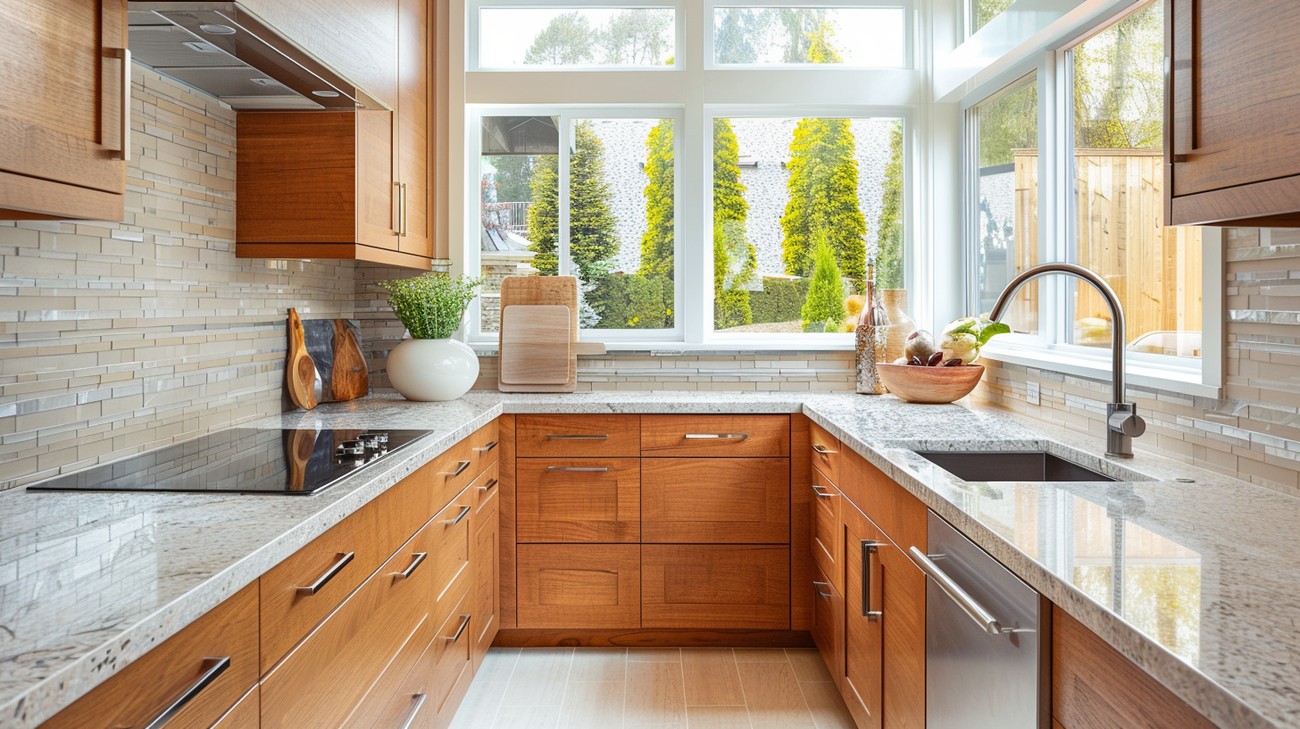
FAQ Section: Refacing Kitchen Cabinets
How does refacing kitchen cabinets compare to replacing them?
Refacing kitchen cabinets involves updating the exterior of your cabinets while keeping the existing cabinet boxes intact. It is often more cost-effective and less time-consuming than a complete cabinet replacement. Refacing typically includes applying new veneer to the cabinet surfaces and replacing hardware like knobs and hinges. In contrast, replacing cabinets involves a complete teardown and installation of new units, which can be more disruptive and expensive but offers more flexibility in design and layout changes.
Can I reface kitchen cabinets myself, or should I hire a professional?
You can reface kitchen cabinets as a DIY project if you have moderate to advanced carpentry skills and patience. However, hiring a professional might be preferable for achieving a flawless finish, especially if you're not comfortable working with veneer or if your cabinets have complex moldings. Professionals can ensure the materials are applied smoothly and that the new hardware is correctly aligned, potentially saving you time and effort in the long run.
What materials are used in the process of refacing kitchen cabinets?
Refacing kitchen cabinets typically involves the use of materials such as wood veneer, laminate, or rigid thermofoil (RTF). Wood veneer offers a natural look and is available in various types like oak, maple, and cherry. Laminate is a more cost-effective option that is available in a wide range of colors and patterns. RTF is a durable alternative that mimics the appearance of natural wood and is more resistant to moisture and warping.
How long does the cabinet refacing process take?
The length of time needed to reface kitchen cabinets can vary depending on the kitchen size and the complexity of the job. Typically, a professional refacing project takes between two to five days. This includes preparation, such as removing existing cabinet doors and veneers, and the actual installation of the new veneers and hardware. If you are undertaking the task as a DIY project, it might take longer, particularly if you are inexperienced or if complications arise.
Is it possible to reface kitchen cabinets that are in poor condition?
Refacing kitchen cabinets is generally effective for cabinets in solid structural condition but with outdated or worn surfaces. However, if the cabinet boxes are damaged, sagging, or mold-infested, refacing may not be suitable. In such cases, a full replacement might be necessary. Before deciding on refacing, it’s important to assess the state of the cabinet boxes to ensure that they can support new veneers and hardware.
What kind of maintenance do refaced kitchen cabinets require?
Refaced kitchen cabinets typically require the same maintenance as regular kitchen cabinets. It’s important to regularly clean the surfaces with a soft, damp cloth and mild detergent to prevent grease buildup and maintain their appearance. Avoid using harsh chemicals or abrasives that could damage the veneer. Also, periodically check the condition of the hardware and hinges, tightening any loose screws to keep your cabinets functioning smoothly.
Will refacing kitchen cabinets add value to my home?
Refacing kitchen cabinets can add significant value to your home by updating the look of the kitchen, which is often one of the most important areas for potential buyers. With a fresh, modern appearance, your kitchen will appeal to more buyers and may increase your home’s resale value. However, the extent of the value added depends on the quality of the materials used and the overall aesthetic appeal of the finished project relative to current interior design trends.
Can I change the layout of my kitchen if I choose to reface rather than replace the cabinets?
Refacing kitchen cabinets primarily affects the appearance and not the layout of your kitchen. If you want to change the layout, cabinet replacement or additional remodeling is required. Refacing is ideal if you are happy with your current kitchen configuration and just wish to update its look. If your goals include altering the kitchen flow, adding more space, or changing the cabinet configuration, complete replacement may be necessary.

Cost Breakdown
Typical Price Ranges
Refacing kitchen cabinets can be a cost-effective way to give your kitchen a fresh, new look without the expense of full cabinet replacement. Generally, you can expect to spend between $7,000 and $20,000, depending on several key factors. On average, homeowners tend to pay around $14,500 for this type of project. Note that this is a ballpark figure, and costs can swing either way depending on the specific details of your project.
Factors That Affect Cost
Several factors can influence the overall cost of refacing kitchen cabinets. First and foremost is the size of your kitchen. Larger kitchens with more cabinetry naturally incur higher refacing costs. The choice of materials is another critical factor. Options like rigid thermofoil or laminate tend to be more budget-friendly, while wood veneers like cherry or walnut fall on the higher end of the spectrum. Don’t forget about hardware, as knobs and pulls can range from basic to designer styles, impacting your final bill.
Labor is another significant component of the cost. The complexity of your cabinet layout and the experience of your chosen contractor can cause labor costs to fluctuate. If there's any repair work needed before refacing, such as fixing water damage or reinforcing the existing structure, this will also increase your costs.
Cost Comparison (Budget vs Premium Options)
If you're watching your wallet, opting for budget materials like laminate can keep your costs on the lower end, typically between $6,000 and $8,500 for a standard kitchen. These budget options are durable and come in a variety of styles.
On the flip side, if you're aiming for a luxurious finish, premium materials like natural wood veneers can push your costs between $12,000 and $15,000 or even higher. Premium options offer a rich, authentic look but come with a heftier price tag.
Hardware also plays a role in cost comparison. Basic knobs and pulls might set you back $2-$10 per piece, while designer hardware can range from $20-$50 or more per piece.
Hidden Costs to Consider
While the primary expenses of refacing are relatively straightforward, there are a few hidden costs to keep an eye on. For instance, if your current cabinet structure is not in great shape, you might need to allocate funds for repairs before you can proceed with refacing. Couple this with any unexpected complexity or structural changes, and your budget could increase significantly.
Shipping and delivery fees for materials can also sneak up on you, especially if you choose a high-end, custom option. Additionally, if your project requires permits or inspections (such as in certain urban areas), ensure you factor in these costs beforehand.
Ways to Save Money
Saving money on cabinet refacing starts with thorough research and planning. Get multiple quotes from contractors to ensure you're securing a fair deal. Sometimes, smaller or local contractors might offer more competitive pricing compared to larger companies. Choose ready-to-install hardware over custom designs to cut costs significantly. Also, consider doing parts of the project yourself—like removing or reinstalling hardware or painting the frames—if you’re comfortable with DIY tasks.

Pros & Cons of Refacing Kitchen Cabinets
Pros
Cost-Effective Facelift
Refacing can save you a bundle compared to a full kitchen remodel. Instead of ripping everything out and starting anew, you’re just upgrading the existing cabinet structure. It’s a brilliant way to refresh your space without breaking the bank.
Quick and Convenient
Time is of the essence, and refacing doesn't demand the lengthy turnaround of a full renovation. We're talking a few days of work rather than weeks of a kitchen in shambles. Imagine the relief of having your kitchen back in action almost instantly.
Minimal Disruption
Since you're not knocking down walls or ripping out cabinetry, you dodge a lot of the typical renovation chaos. Your routine stays mostly intact, and the endless layer of construction dust is kept at bay – hooray for cleaner living!
Eco-Friendly Choice
Choosing to reface over replace is kind to Mother Earth. By utilizing your existing cabinet framework, you're generating less waste. Plus, you can opt for environmentally sustainable materials, ticking that eco-conscious box even further.
Fresh Look, Varied Options
Refacing opens up a world of design possibilities. From sleek, modern veneers to classic wooden finishes, your kitchen can undergo a serious style transformation. You’re not limited to just a paint job; you're choosing a whole new exterior identity.
Increased Home Value
A stylish kitchen can significantly boost your home's appeal and market value. Potential buyers typically view the kitchen as one of the most critical aspects of a home, so a fresh facelift can pack a punch in terms of desirability.
Cons
Cost Can Still Add Up
While it's cheaper than a full remodel, refacing isn't dirt cheap. Depending on the materials and finishes you choose, costs can rise unexpectedly. It's vital to set a budget and try to stick to it, lest you wind up with a bigger bill than anticipated.
Limited Structural Changes
If your kitchen layout just isn't working for you, refacing doesn't solve that problem. The footprint remains the same, meaning workflow and space issues aren't addressed. If that's a concern, a full remodel might be needed instead.
Potential for a Mismatch
Sometimes the old cabinets' framework doesn't mesh well with new materials or finishes. If there's warping, damage, or uneven surfaces, results might not meet your expectations. It's essential that the foundations are in good shape for a successful transformation.
Quality Concerns
The results of refacing heavily depend on the quality of materials and workmanship. Cutting corners here can lead to peeling laminates or misaligned doors over time, making professional installation or higher-end materials a worthwhile consideration.
Limited Lifespan
While refacing refreshes the look, it's not a forever solution. The underlying structure may continue to age, eventually necessitating a more comprehensive overhaul down the line. It's a great intermediate step, but probably not the last one.
Potential for Hidden Costs
Unexpected issues might surface once the project begins—like prior water damage or pest infestations—that need addressing before refacing can proceed. These surprises can lead to additional expenses not initially considered in your budget.
Final Thoughts
Refacing kitchen cabinets is a fantastic way to breathe new life into your kitchen without the cost and hassle of a full renovation. By updating the surfaces, adding new hardware, and incorporating modern finishes, you can transform your space while preserving what works. This process not only enhances the aesthetic appeal but also adds significant value to your home.
If you’re ready to take the next step in revitalizing your kitchen, we’re here to help. At GVD Renovations & Remodeling, we specialize in kitchen updates for homeowners in Northern California, offering personalized consultations to guide you through the refacing process. Feel free to reach out to us for a free estimate or to discuss your ideas—we can't wait to help you create the kitchen of your dreams!
This article is for general information only and not professional advice. Always consult a licensed contractor before making project decisions. Product details, specifications, or warranties may have changed since publication. Brand and product mentions reflect opinion, not endorsements or guarantees.
Tags: kitchen cabinets, refacing, remodeling,

